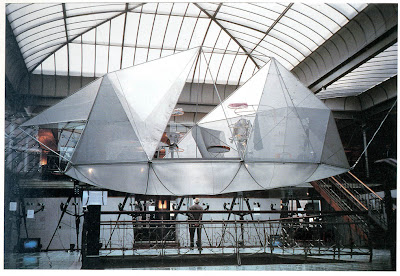I've been told that my posts are 'shop-talk' heavy. This post probably won't differ in that regard, but it'll have way more explanations and illustrations--starting with the results of an experiment in parametric design I conducted in my third year in school.
Parametric design is a fancy name that can lend itself to several interpretations. It refers to a mode of computer assisted design where forms, surfaces, sizes, shapes, configurations etc. are manipulated and controlled by a set of parameters. In execution, it usually entails the use of a software that generates shapes mathematically, which allows easy manipulation by applying mathematical functions. Here, 'parametric' refers to parametric equations.
Now when I say Parametric design can be variously interpreted, it is due to the notion that all design is 'parametric' in the sense that it is developed using sets of parameters. The
model of design thought (framing a problem, making a move, then evaluating) comes down to what criteria--which parameters--you assess your work by. However, when generating design solutions using scripting (scripts-small computer programs that perform specific functions) and mathematical equations, the steps of design thinking collapse into a fluid state. The script is formed with a specific framing of the design problem in mind and evaluating parameters are built in. A series of moves are undertaken by the script, which output a result that can be manipulated (move + evaluate). All of these steps happen in real-time nearly simultaneously with a degree of fluidity which is harder to achieve with traditional methods.



